Opinion
Kenny Schachter on miart, the Milan Art Fair So Eccentric He Might Just Want to Move In
With UK taxes nipping at his heels, our columnist considers a move to the less onerous Italian art capital.
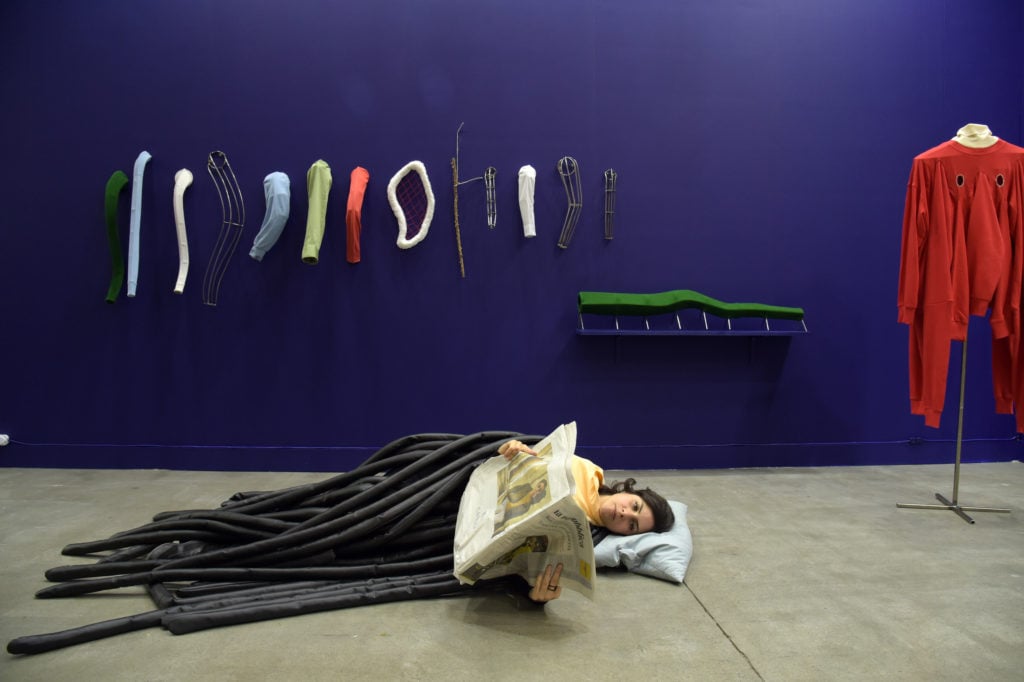
With UK taxes nipping at his heels, our columnist considers a move to the less onerous Italian art capital.

Kenny Schachter

I’m like a sacrificial lamb trudging across the world to art fairs so you don’t have to. Yes, I can see the incongruity of the notion—and the biblical tone doesn’t quite suit me—so let’s say I’m more akin to a hyena cackling away at the seeming absurdity of it all (with constantly sore feet). I’m not sure how much actually sells at these never-ending carousels of art commerce—in some cases none, trust me—but on a certain level it doesn’t matter: Fairs are a necessary cogwheel in the machine that powers today’s art trade. They’re also a surprisingly effective means to experience, learn, and partake in conversations about art—just not during the opening onslaughts.
After I moved to the UK in 2004, I engaged in a blitz of seven regional fairs to assimilate into Europe (it didn’t add much) before that was the norm. Today, galleries could participate in upwards of 10 or more fairs in a given year. Among the events I did included three in Italy (Turin, Bologna, and Milan), Art Cologne (I somehow ended up on the selection committee), and Art Brussels. For all my efforts—and aching feet—sales were hard to come by. And it wasn’t just my special personality (I know what you might be thinking): My Art Brussels booth included masterful works by Robert Smithson, Paul Thek, Vito Acconci, and Richard Tuttle, and I sold naught, not even a catalogue. (Though I might have phrased it differently to the press at the time.
Milan is attracting attention of late for reasons other than art, but just as essential: taxing policy. Namely, a flat rate of €100,000 was enacted in 2017 on all non-Italian-sourced business for individuals who transfer their tax residence to Italy—a zero-sum assault on the previously more liberal non-domiciled polices in the UK, where you are now deemed a UK taxpayer after 15, rather than 17, years of residency (as in the past). After having clocked 15 years in London, beware—I might be moving to a favorable tax jurisdiction near you.
I attended the 23rd edition of miart, which I can assure you is entirely more pleasant endeavor when you’re spectating rather than boothing. The best and worst aspects of the fair are the same—out of 184 galleries, I counted more than 100 from Italy. I didn’t know there were that many in the country! Oh relax, I’m joking (and may soon be living among them). With more indigenous fare than Hong Kong, both before and after Art Basel’s corporate takeover, the fair was an eye-opener regarding the depth and breadth of Modern and contemporary Italian art—and design, of course. (The stylish Italians would never deploy one without the other.)
A good thing about fairs, in laid-back Italy and elsewhere, is that they open midday, which is one less rationalization I need to make as to why I tend to spend so much time in my hotel bed. It took me a day to find the minibar in Milan that for some reason was located next to the toilet, which was the nicest part of a room so dark you could develop photos in it. I’m not above a little feng shui and am prone to changing furniture around if my stay is more than a night or two. In comparison to the well-documented chaos on my home front, this is most definitely not a complaint.
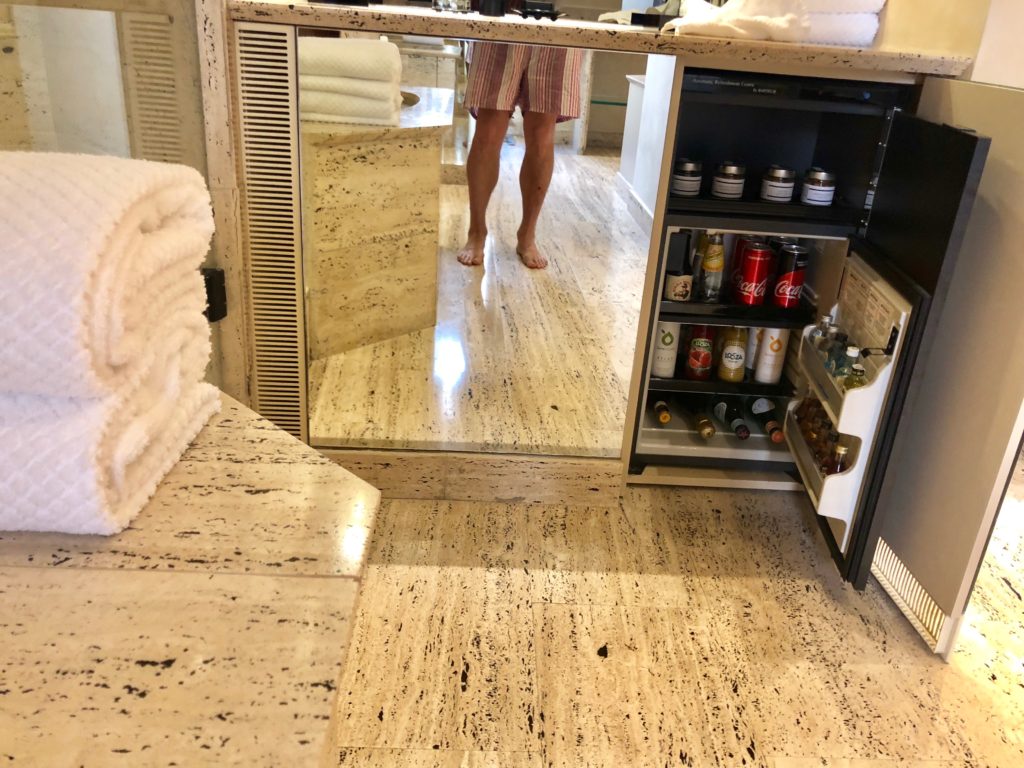
Dude, where’s the minibar? Lost in Milan. Photo courtesy of Kenny Schachter.
You can amble around miart (and Art Cologne, too) without distraction, as they are less peopled by obvious suspects and feature distinct local voices on show as opposed to the homogenized, bland obviousness of the dishes served up at more commercial enterprises (e.g., the Friezes, Basels, and Maastrichts). When I walked in on the third day of miart, it was uncrowded and I didn’t recognize a single punter. I felt like a cultural anthropologist on the path to discovery. I queried a gallery assistant on the price of an Alberto Burri, the Italian equivalent of Basquiat or Warhol at a more conventional fair, and I was handed a business card that read “Art Fair Assistant.” Who knew? It’s a career choice now, I suppose—a subject I could teach a PhD in.
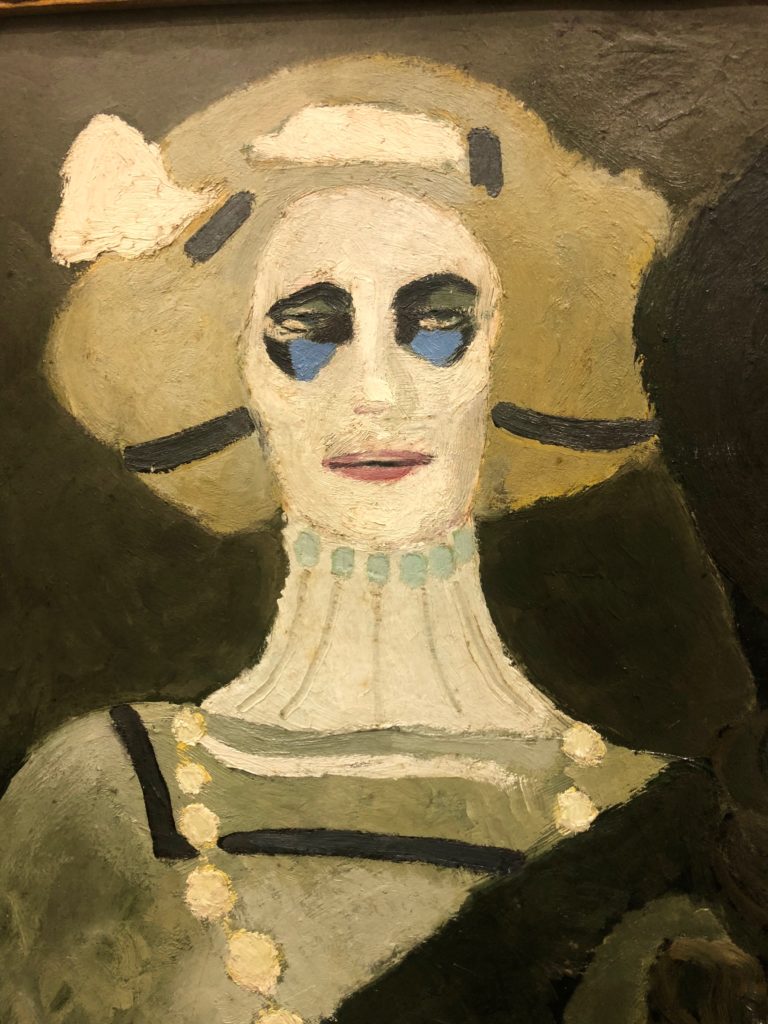
Yikes! The haunting paintings of Lorenzo Viani at Galleria d’Arte Frediano Farsetti. Image courtesy of Kenny Schachter.
Lorenzo Viani (1882–1936) at Galleria d’Arte Frediano Farsetti was one of my finds, a painter who received his training in a barbershop instead of art school or as a studio assistant, fought in World War II, and served time in jail for anarchism. Throughout his life, he suffered from debilitating asthma and was at one point institutionalized in a psychiatric hospital, but he managed to paint the patients in much the same way that he did the downtrodden of whichever village he resided in. His works bring to mind Klimt with a dose of deranged misery substituted for beauty (in the more traditional sense of the term).
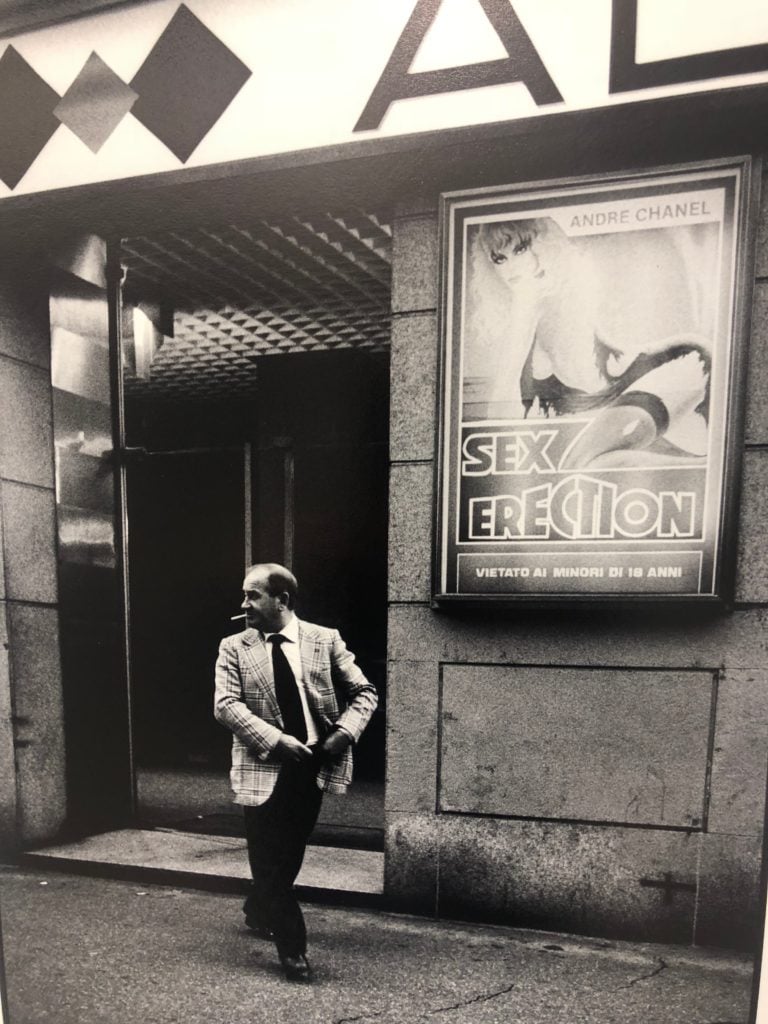
Zip it up, post-porn, by Paola Mattioli. Image courtesy of Kenny Schachter.
Another Florentine gallery, Frittelli Arte Contemporanea, exhibited feminist Italian painting, collage, and photography from the 1970s, which included Paola Mattioli (b. 1948), a conceptual photographer addressing such issues as gender and politics in a manner both funny and disturbing—like a middle-aged perv exiting a porn theater with a dangling cigarette, adjusting his belt while furtively checking to confirm his anonymity.
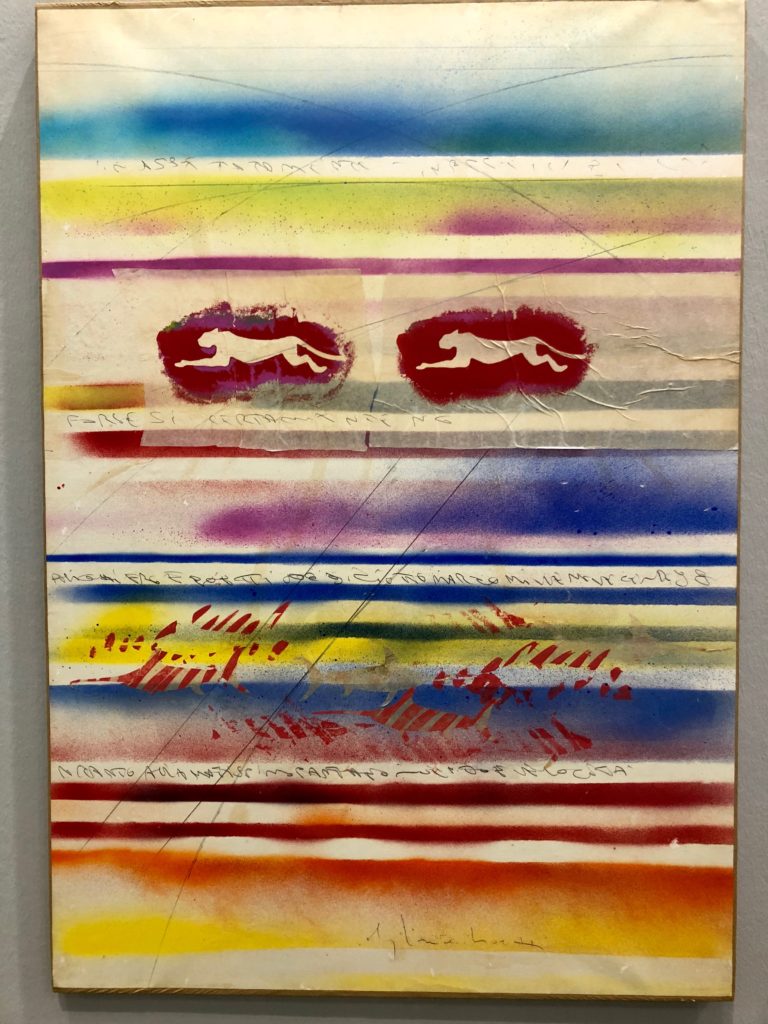
The artist’s hand. An “important” Boetti at miart. Photo courtesy of Kenny Schachter.
The Milan fair may have its endearing particularities, but the language of selling art remains the same the world over—like when the salesperson from Erica Ravenna Fiorentini Arte Contemporanea (such melodious names) from Rome reassured me about an Alighiero Boetti piece: “The artist mounted the paper on canvas himself, which makes the work much, much more important”—not the ‘I’-word!—”thus very special and valuable.” Definitely. Galleria Fumagalli from Milan had a collection of Vito Acconci photo/text works on its stand, a few of which I used to own (I think—help the aged), priced from €35,000 to €60,000.
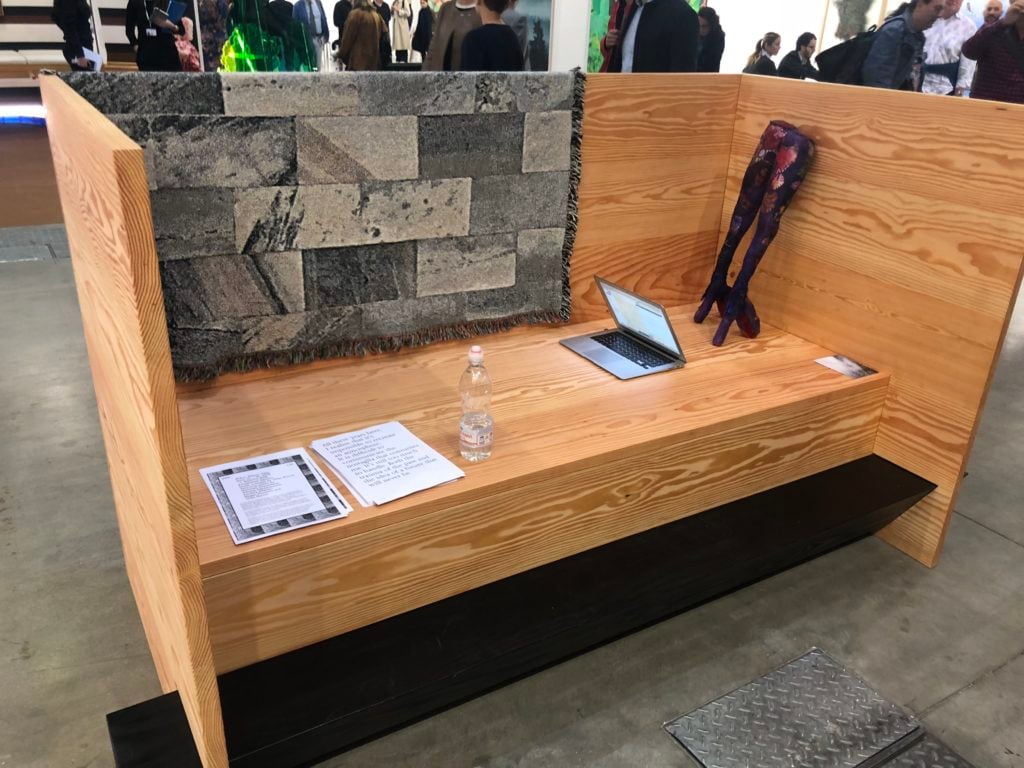
London’s up-and-coming Emalin Gallery at miart. Photo courtesy of Kenny Schachter.
Emalin is a two-year-old East London startup run by twenty-somethings Leopold Thun and Angelina Volk that did miart for the third consecutive time—this year they’ll do a total of seven fairs. Emalin is smack in the middle of the predicament (if there is one) swirling around regarding the sustainability of mid-level galleries. I admittedly didn’t get off to an auspicious start with Angelina when I was sat next to her at a dinner and started the conversation with the fact that it took me three hours to do a round trip to her gallery, and that medium-sized venues inherently suffer—it’s part of the business plan.
Not discouraged by the long journey (and my experience with one of the owners), I recently set off again to Emalin when I was back in London to see an exhibit by the young and institutionally embraced video artist Aslan Gaisumov. The fact that one of the bulbs from the two projectors malfunctioned just prior to my arrival was more endearing than off-putting, I thought. They also showed Alvaro Barrington, an American graduate of London’s Slade quickly catapulting to the big time—you can find the work at Thaddaeus Ropac in London now, and Sadie Coles to come. But, mindful of his exposition roots, Barrington is still consigning to Emalin. (I know, I just bought a small one.)
Therein lies a partial solution as to how artists can contribute to nurturing the galleries from which they grew: keep on keeping on (consigning). Another way forward is for more dealers, more established than me, to make it their business to regularly buy art from similar such spaces. It was nice to have more time to converse with Angelina and Leopold. l like and respect them, if not exactly get along.
Part two of this column, in which Kenny Schachter recounts his foray to Art Cologne, will be published tomorrow.